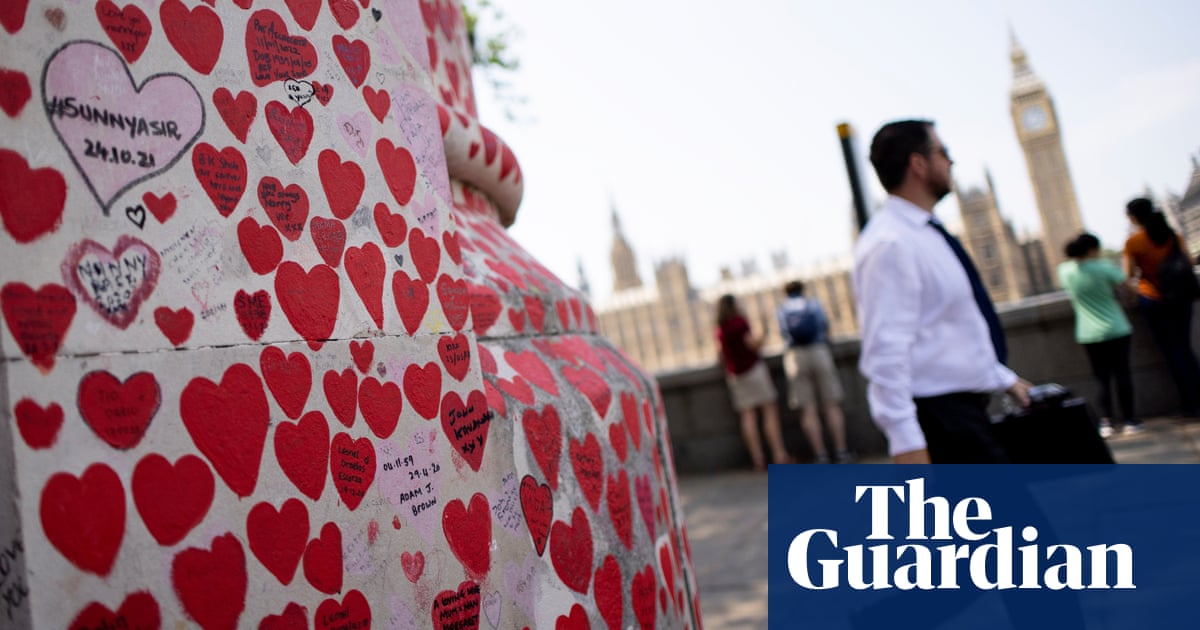
Contact tracing alone has a marginal impact on Covid transmission, curbing the spread of the disease by just 2% to 5%, official estimates show.
The figures come after Dido Harding, who heads the government’s £22bn test-and-trace programme in England, suggested it was set to substantially reduce the spread of coronavirus this spring.
Newly published data behind that assertion shows the vast majority of the impact of test and trace is down to people self-isolating. An army of contact tracers has been hired to track down close contacts of those who test positive for Covid, and ask them to self-isolate. The contact tracers also remind people of the need to quarantine after a positive test.
Earlier this month, Harding told MPs that thanks to test and trace, the R (reproduction) number for the virus was expected to fall by between 0.6 and 0.8 at the end of March, an improvement on a drop of between 0.3 and 0.6 achieved in October. Greg Clark, the chair of the science and technology committee, pressed Harding for the source of the claim.
Published last week, the official report behind the claim said a combination of testing, tracing and self-isolation in an environment similar to last October’s resulted in an R reduction of 18% to 33% when compared with a scenario involving only social distancing restrictions and no self-isolation. This corresponded to a reduction in the R number of 0.3 to 0.6.
Contact tracing alone reduced the R number by just 2% to 5%, the modellers estimated in the report, with testing and self-isolation accounting for the remaining 16% to 28%. “Hence, the majority of transmission reduction is due to isolation on symptoms,” it said.
If all test and trace targets were met – and circumstances otherwise were similar to those in October – the model estimates that transmission would reduce by 33% to 42%, including a contact-tracing impact of 7% to 10%. That translates to an R reduction of 0.5 to 0.8, Harding wrote in a letter to Clark.
Prof Sir David Spiegelhalter, chair of the Winton Centre for Risk and Evidence Communication at the University of Cambridge, noted on Tuesday that the report stresses the R reduction estimate is in comparison to a scenario with only social distancing restrictions and no self-isolation.
However, advice to self-isolate upon developing symptoms was already in place before NHS Test and Trace was set up in May, together with some testing capacity.
Spiegelhalter told the Guardian: “It’s unfortunate but understandable that they felt unable to estimate the influence of TTI [test, trace and isolate] over and above other strategies to encourage self-isolation.”
The R number reflects how many people an infected person can spread the disease to – and it must be below 1 for the epidemic to wane. As of Friday, scientists estimate the UK-wide R number is between 0.7 to 0.9.
Harding’s projection of a 0.6 to 0.8 reduction by the end of March is optimistic, suggested Prof Rowland Kao, who studies infectious disease dynamics at the University of Edinburgh.
“The potential for test and trace to work effectively is there – a large proportion of transmission is believed to occur before people are symptomatic, so if you can get people to isolate, thereby reducing contact, then it can eliminate this element of the spread – and 0.6 to 0.8 impact on R is not necessarily out of line,” Kao said. “So, the potential is there but unless people self-isolate … then all the test and trace isn’t going to help.”
Dr Kit Yates, a senior lecturer in the department of mathematical sciences at the University of Bath, indicated the considerable resources set aside for NHS Test and Trace could be put to better use by focusing on isolation.
“One can’t help thinking that some of the £22bn – the figure widely quoted as having been earmarked for the operation thus far – might be better spent on providing support for isolation, which is likely to have a significant impact reducing transmission,” said Yates.
About 20,000 people a day who are contacted by test and trace are not fully isolating, Harding has said. The estimate suggests 20% to 40% of people cannot or do not comply with the rules. Research suggests a majority of people who apply for a one-off £500 payment for isolation are rejected.












